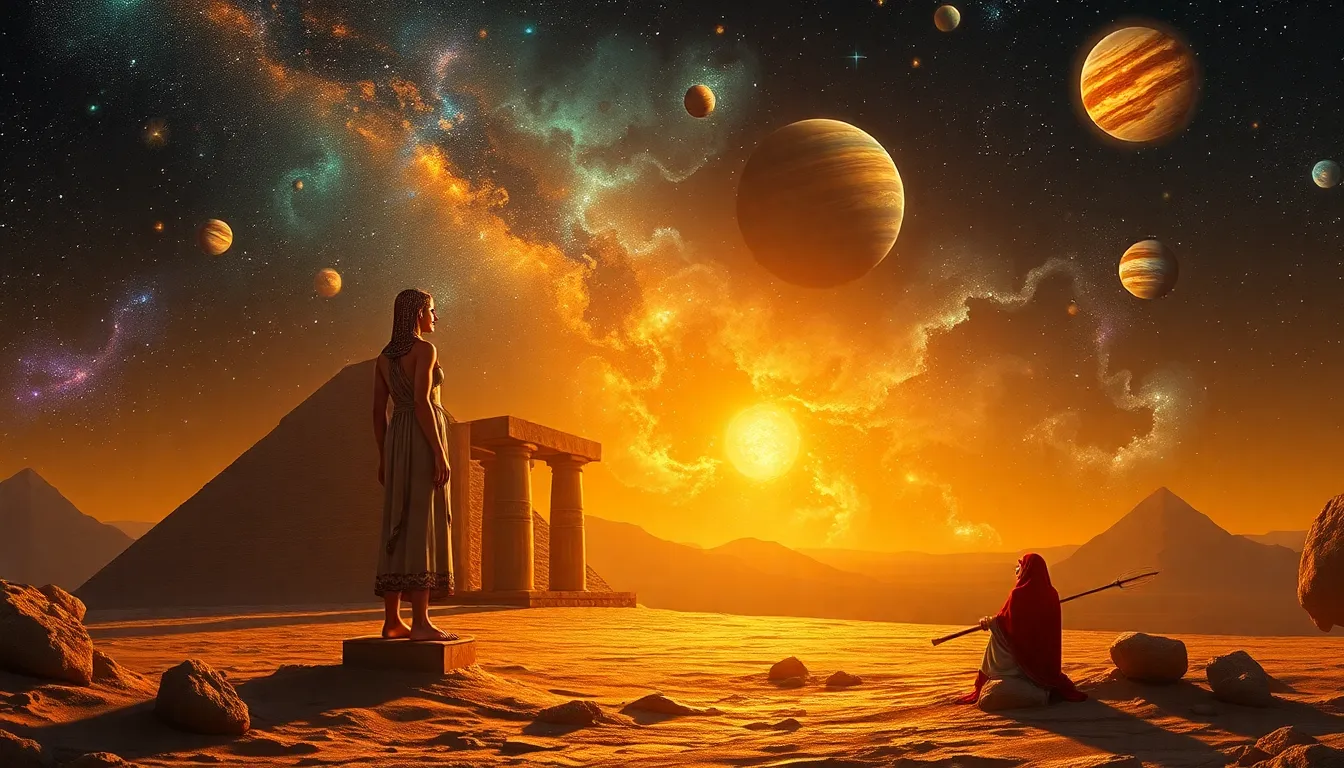The Birth of the Celestial Bodies: Myths of Stars and Planets
I. Introduction
The vastness of the cosmos has always captivated human imagination, leading to the creation of various myths and legends surrounding celestial bodies. Throughout history, cultures around the world have woven intricate narratives that explain the origins and significance of stars and planets.
These myths not only reflect our ancestors’ understanding of the universe but also serve as a means to connect with the mysteries of life and nature. This article aims to explore the rich tapestry of celestial myths across different cultures, examining their role in shaping human thought and belief.
In the following sections, we will delve into ancient cosmological beliefs, the birth of stars, the formation of planets, the influence of celestial bodies on earthly life, modern interpretations, and artistic representations of these celestial myths.
II. Ancient Civilizations and Their Cosmological Myths
Various ancient civilizations developed unique cosmological myths that explain the origins of the universe and celestial bodies. Each culture had its own understanding of the cosmos, shaped by its environment, culture, and experiences.
- Overview of various ancient cultures: Civilizations such as the Egyptians, Mesopotamians, Greeks, and Native Americans all contributed rich narratives about the celestial realm.
- The role of astronomy in early societies: Astronomy played a vital role in agriculture, navigation, and religious practices, influencing daily life and societal organization.
- Common themes in celestial myths: Many myths share themes of creation, divine intervention, and the cyclical nature of life and death.
III. The Birth of Stars: Myths Across Cultures
Stars have been a source of wonder and inspiration for countless cultures. Various myths depict the birth of stars, often associating them with divine beings or significant events.
A. Greek mythology and the birth of stars
In Greek mythology, stars were often seen as manifestations of gods and goddesses. One notable story is that of Astraea, the goddess of justice, who became the constellation Virgo.
B. Native American star myths
Native American cultures have rich traditions of storytelling about the stars. For example, the Lakota and Navajo tribes have creation stories that involve celestial beings and the origins of constellations.
C. Hindu cosmology and the birth of stars
In Hindu cosmology, the Nakshatras, or lunar mansions, are significant celestial markers that influence human destiny. Each Nakshatra is associated with specific qualities and deities, highlighting the sacredness of the stars.
IV. The Formation of Planets: Folklore and Legends
Planets, as celestial bodies visible to the naked eye, have inspired various myths that explain their formation and significance in the cosmos.
A. Mesopotamian myths and planetary deities
The ancient Mesopotamians worshipped planetary deities such as Anu and Enlil, who were associated with the heavens and played crucial roles in their cosmology.
B. Egyptian mythology and planetary formation
In Egyptian mythology, Ra, the sun god, embarked on a journey through the underworld each night, symbolizing the cycle of day and night, and the birth of celestial bodies.
C. The role of planets in Norse mythology
Norse mythology describes the creation of Midgard, the world of humans, and its celestial connections, where planets are seen as significant entities influencing human affairs.
V. The Influence of Celestial Bodies on Earthly Life
The connection between celestial bodies and earthly life is a recurring theme in many myths. The influence of stars and planets extends beyond mere observation; it has shaped beliefs, practices, and daily life.
- Astrology and its roots in celestial myths: Astrology, which connects celestial positions to human personality and fate, has its roots in ancient mythologies.
- The significance of stars and planets in navigation and agriculture: Ancient navigators relied on the stars for guidance, while agricultural societies used celestial cycles to determine planting and harvesting times.
- Myths of celestial bodies influencing human fate: Many cultures believed that the positions of stars and planets at the time of birth could affect a person’s destiny.
VI. Modern Interpretations and Scientific Perspectives
As humanity’s understanding of the cosmos has evolved, so too have interpretations of celestial myths. The transition from mythology to astronomy has been significant.
- The shift from mythology to astronomy: The development of scientific inquiry has led to a clearer understanding of celestial phenomena, moving away from mythological explanations.
- How ancient myths inform contemporary understanding of the cosmos: Many modern scientists and astronomers acknowledge the influence of ancient myths on early scientific thought and the development of astronomy.
- The legacy of celestial myths in modern culture: The stories of stars and planets continue to inspire literature, art, and popular culture, demonstrating their enduring relevance.
VII. The Artistic Representation of Celestial Myths
The beauty and mystery of celestial bodies have inspired countless artistic expressions throughout history.
- Literature and poetry inspired by celestial bodies: Poets and writers have long drawn inspiration from the night sky, using celestial imagery to convey profound themes.
- Visual arts: paintings and sculptures depicting myths: Artists have created stunning representations of celestial myths, capturing the imagination and beauty of the cosmos.
- The impact of myths on modern media and popular culture: Celestial myths continue to influence films, television shows, and other forms of media, keeping these ancient stories alive.
VIII. Conclusion
Throughout history, myths of celestial bodies have served as a means to explain the universe’s mysteries, reflecting humanity’s desire to understand its place in the cosmos. From the birth of stars to the formation of planets, these narratives reveal common themes across cultures, illustrating our shared fascination with the heavens.
As we continue to explore the cosmos through scientific inquiry, the echoes of ancient myths remind us of the cultural significance of celestial bodies in shaping human thought and belief. The stories of stars and planets invite us to look up at the night sky, inspiring further exploration and contemplation of the universe and its timeless tales.




